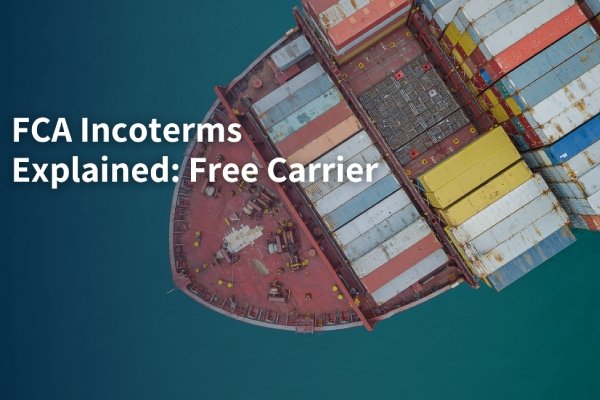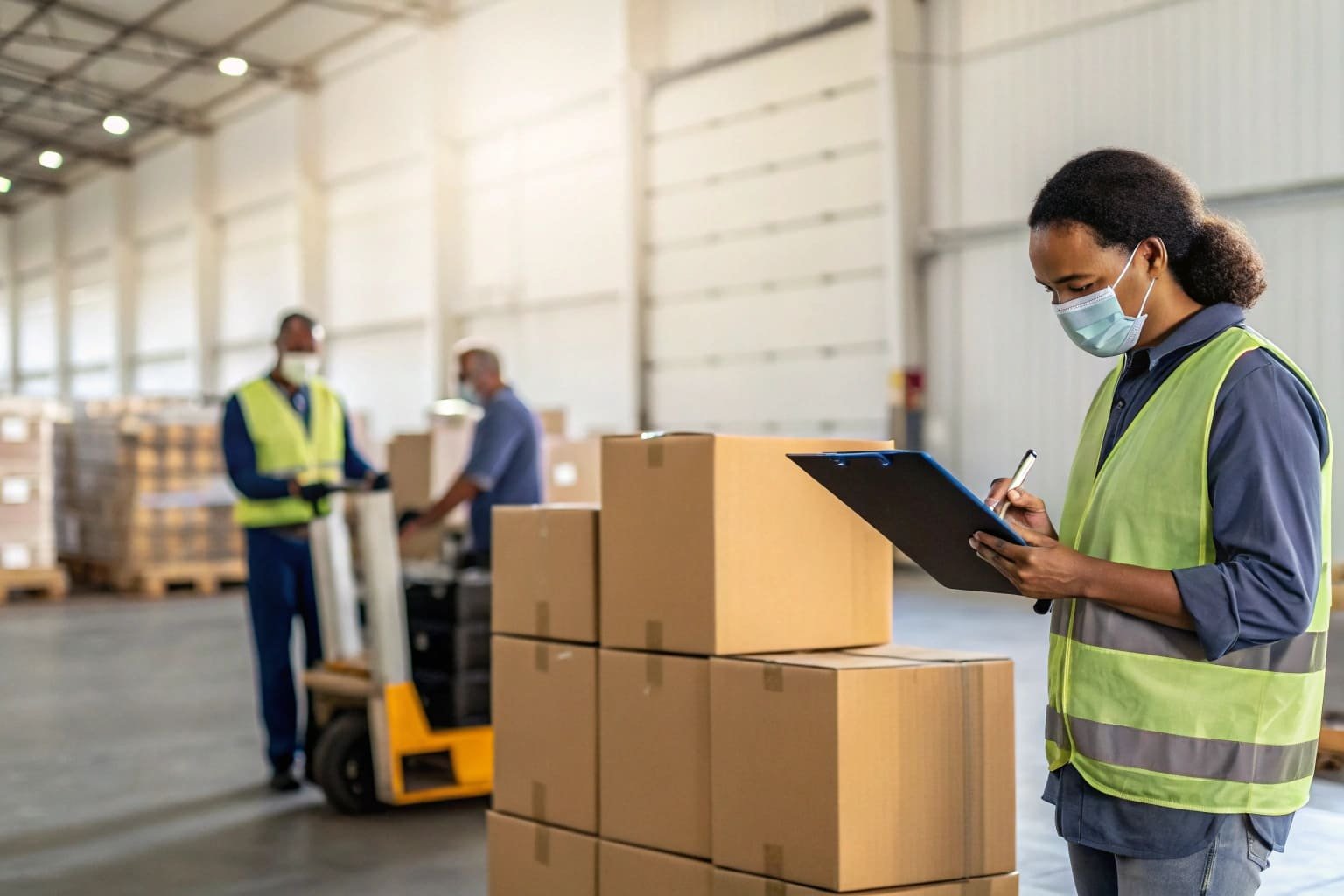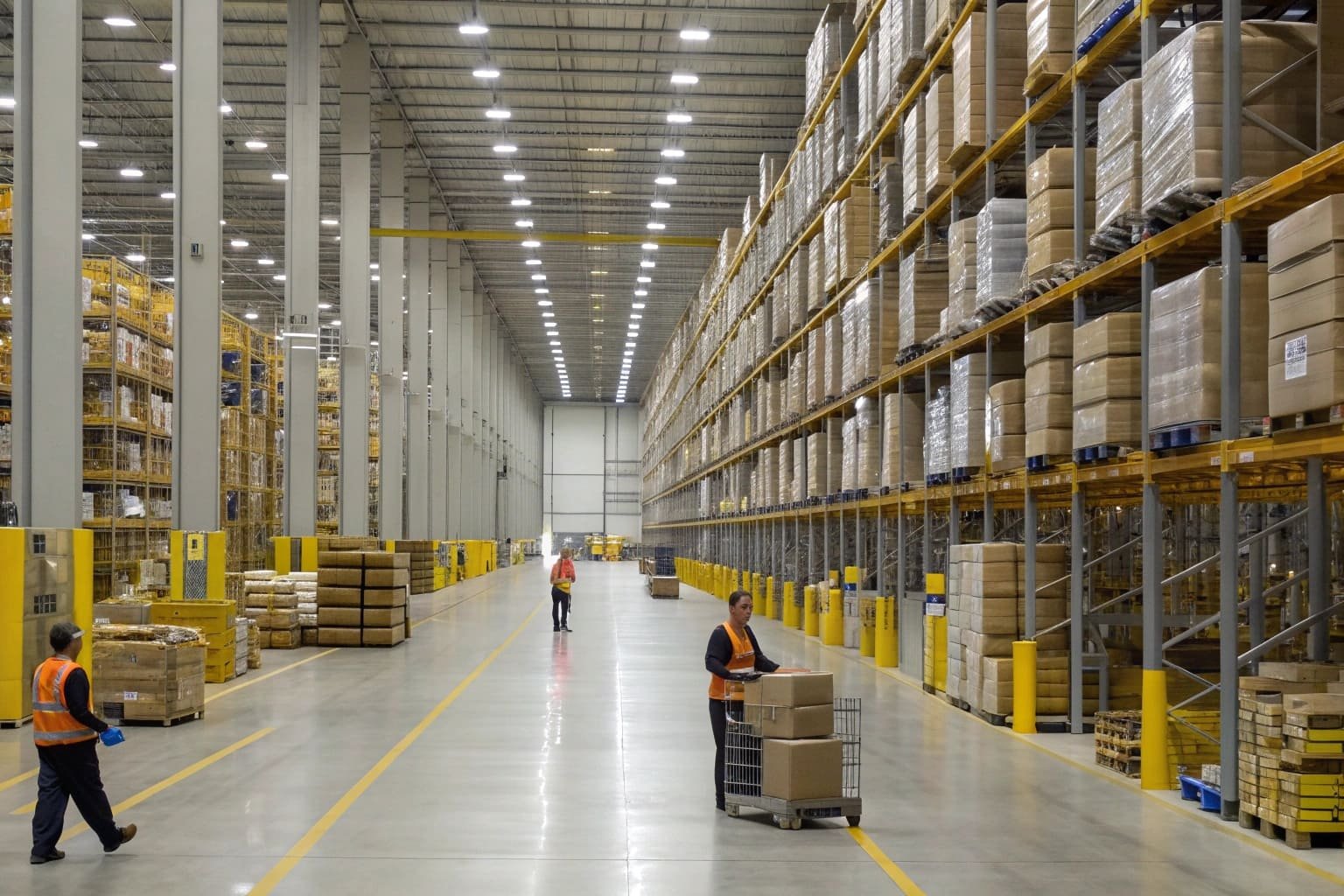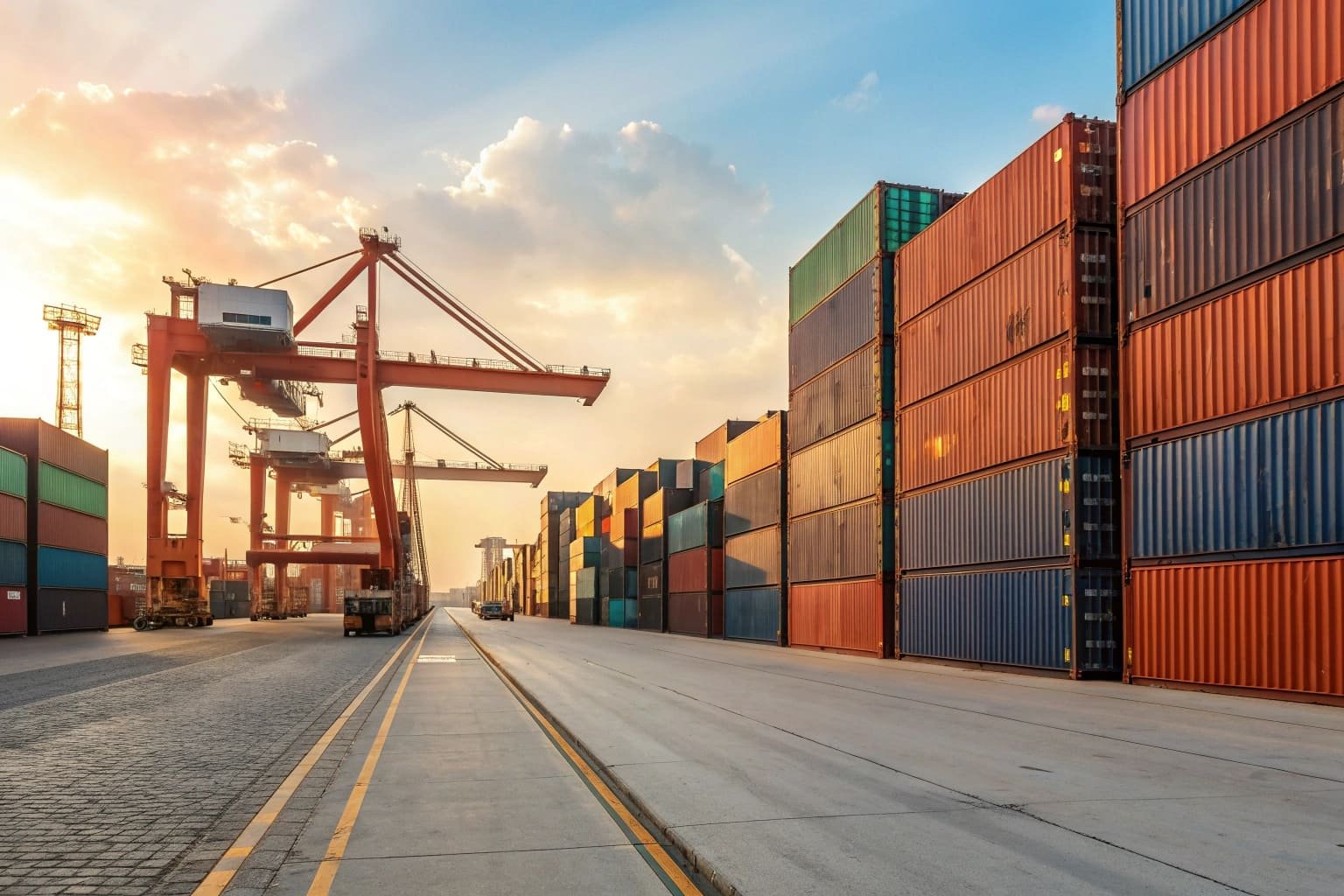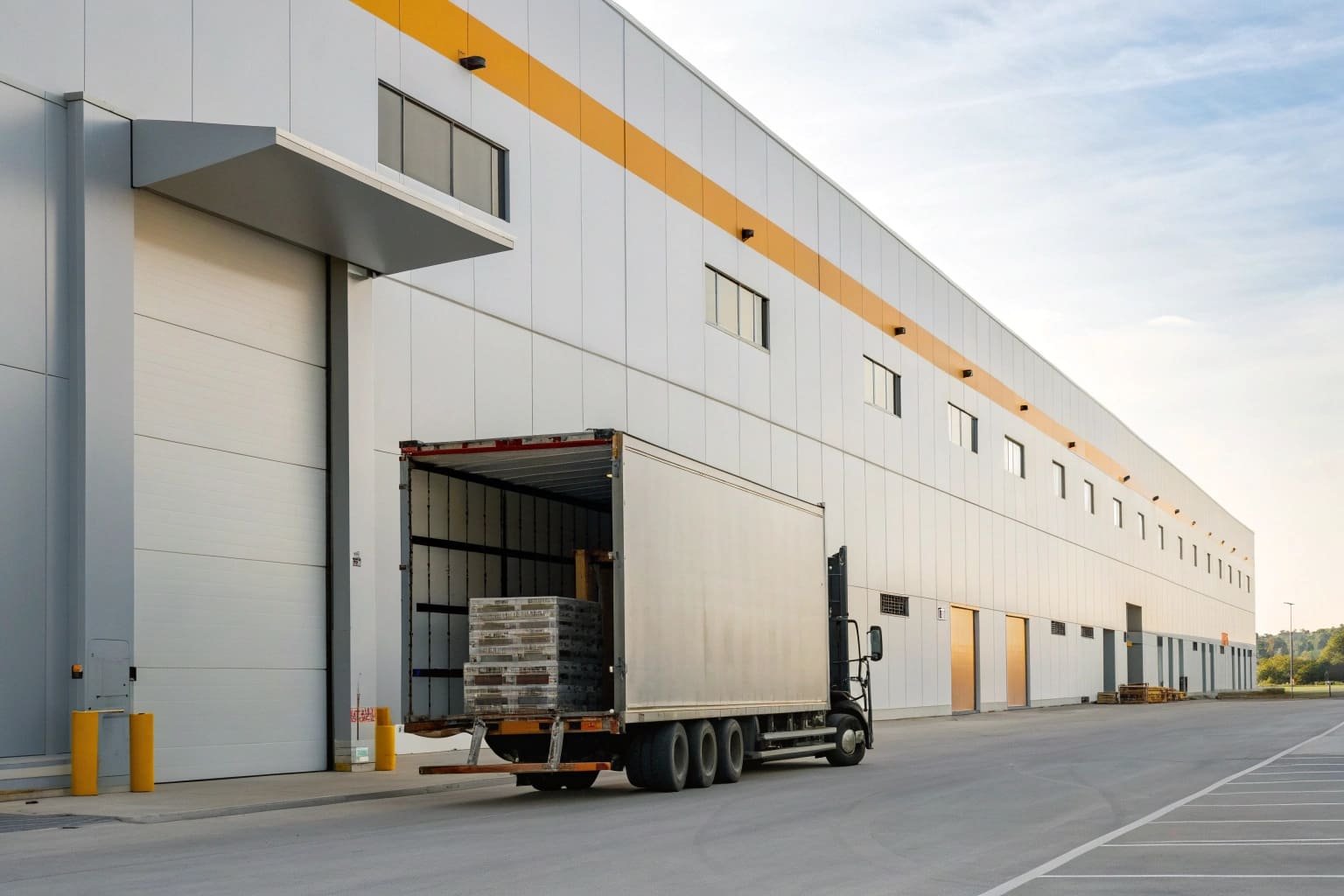In the fast-paced world of international trade, ensuring smooth delivery of goods across borders is crucial. With multiple parties, countries, and regulations involved, it's essential to clarify the responsibilities between buyers and sellers in every transaction. This is where Incoterms (International Commercial Terms) come into play.
One of the most popular Incoterms is FCA (Free Carrier). Understanding how it works can significantly streamline shipping processes and help avoid misunderstandings in global trade. In this guide, we’ll explain the FCA Incoterm in simple terms, breaking down its responsibilities, benefits, and how it fits into the bigger picture of international commerce.
What Are Incoterms and Why Are They Important?
Before diving into FCA, it's essential to understand what Incoterms are and why they play a vital role in international trade. Incoterms are a set of standardized trade terms published by the International Chamber of Commerce (ICC). These terms are designed to reduce confusion by outlining who is responsible for different parts of the shipping process, such as transportation, risk, and customs clearance.
When trading internationally, sellers and buyers need to be clear on who pays for what, who bears the risk, and where those responsibilities transfer. Incoterms answer questions like:
- Who arranges and pays for transportation?
- Who is responsible for customs clearance and duties?
- At what point does the risk transfer from the seller to the buyer?
Without clear agreements in place, confusion over these details can result in delays, added costs, or even disputes. That's why businesses use Incoterms in their contracts to ensure that both parties understand their obligations.
There are 11 Incoterms in total, each defining specific responsibilities for buyers and sellers. Some are more suitable for certain types of transportation, while others apply to all modes. FCA is one of the most widely used and versatile Incoterms, making it an excellent choice for many types of international transactions.
What is FCA Incoterm ?
FCA (Free Carrier) is an Incoterm that places the main responsibility for delivering goods to a specific location on the seller. Once the seller delivers the goods to the buyer’s designated carrier at the named place, the risk of loss or damage shifts to the buyer. After this point, the buyer is responsible for organizing the main transportation and handling customs clearance in the destination country.
Key Features of FCA:
- Seller’s Responsibilities:
- The seller must package the goods for safe transport.
- The seller is responsible for arranging export customs clearance.
- The seller delivers the goods to a specified place (the named place), such as a transport hub, warehouse, or another location agreed upon in the contract.
- Buyer’s Responsibilities:
- The buyer arranges for transportation from the delivery point to the final destination.
- The buyer assumes all risks and costs once the goods are handed over to their designated carrier.
- The buyer handles customs clearance, duties, and any other taxes in the importing country.
FCA is widely used because it applies to all modes of transport, including air, sea, road, and rail. This makes it particularly valuable in global trade, where goods may be moved through multiple transport methods before reaching their final destination.

How FCA Works in Practice
To better understand the FCA Incoterm, let’s walk through a typical FCA transaction:
Step 1: Seller Prepares Goods for Shipment
The seller packages the goods to ensure they are safe for transport. This could involve specific packaging requirements to prevent damage, depending on the nature of the goods. The seller also completes all export-related paperwork, ensuring the goods meet the legal requirements for shipment out of the country.
Step 2: Seller Delivers Goods to the Agreed Location
The seller transports the goods to the named place. This could be the seller’s warehouse, a port, or another location where the buyer’s carrier is expected to pick them up. The exact delivery location must be specified clearly in the contract.
Step 3: Buyer Assumes Responsibility
Once the goods are handed over to the buyer’s carrier at the agreed location, the responsibility for the goods transfers from the seller to the buyer. This means the buyer takes on all risk from this point forward, including the risk of loss or damage during the main transportation leg.
Step 4: Buyer Arranges Main Transport
The buyer is now responsible for organizing the transportation of the goods to the final destination. This could involve sea freight, air freight, or land transportation, depending on the nature of the shipment.
Step 5: Buyer Handles Import Customs Clearance
When the goods arrive in the buyer’s country, the buyer must arrange for import customs clearance. This includes paying any applicable duties, taxes, and fees.
Benefits of Using FCA for Sellers and Buyers
Both buyers and sellers can benefit from using the FCA Incoterm, as it offers a fair distribution of responsibilities.
For Sellers:
- Reduced Risk: The seller’s responsibility ends once the goods are handed over to the carrier at the named place. This means that the seller does not have to worry about what happens during the main transportation, as the risk shifts to the buyer.
- Simplified Logistics: Since the seller only has to deliver the goods to a specified location and handle export clearance, they avoid the complexities of international shipping.
- Lower Costs: By transferring responsibility to the buyer early, sellers can avoid the high costs of long-distance transportation.
For Buyers:
- Control Over Transportation: FCA gives the buyer more control over the shipping process. Buyers can choose their preferred carrier, negotiate their own rates, and manage transportation according to their needs.
- Flexibility: FCA can be used with any type of transport, which means it’s suitable for a variety of goods and shipment methods. Buyers who need multimodal transport can benefit from this flexibility.
- Risk Management: Since the buyer assumes responsibility once the goods are handed over, they have control over insurance and risk management. This can be beneficial for buyers who want to ensure that the goods are fully covered during transport.
When Should You Use FCA?
The FCA Incoterm is particularly useful in several types of trade scenarios. Here are some cases where FCA is the best option:
- Containerized Shipments: FCA works well for goods that are transported in containers. Sellers can deliver the goods to the container terminal or another named place where the buyer’s carrier takes over.
- Multimodal Transportation: If your shipment involves more than one mode of transport (e.g., road and sea), FCA provides the flexibility to transfer responsibility at the point where the seller delivers to the carrier. This is especially useful for complex logistics chains.
- Buyer’s Preference for Control: FCA is ideal when the buyer wants to handle the majority of the transportation process. It gives them the ability to choose their own logistics provider and arrange for transport on their terms.
- Exports That Require Seller-Handled Customs Clearance: FCA is a good option if the seller is responsible for getting the goods cleared through export customs. Once this is done, the responsibility transfers to the buyer for the main leg of the journey.
FCA vs. Other Common Incoterms
To gain a better understanding of FCA, let’s compare it to some of the other popular Incoterms.
FCA vs. FOB (Free On Board)
FOB (Free On Board) is another popular Incoterm but is only used for sea and inland waterway transport. In FOB, the seller is responsible for delivering the goods to a ship at the port of shipment. The risk transfers to the buyer once the goods are loaded onto the vessel.
Key Differences:
- FCA can be used for all transport modes, while FOB is restricted to sea transport.
- In FOB, the risk transfers at the point of loading onto the ship, whereas in FCA, it transfers at the named place (which could be earlier in the process).
FCA vs. EXW (Ex Works)
EXW (Ex Works) is one of the simplest Incoterms, where the buyer takes responsibility for the goods from the seller’s premises. The buyer must arrange all transportation, export customs clearance, and assume all risks from the moment the goods are made available.
Key Differences:
- In EXW, the buyer takes on more responsibility, including export clearance, while in FCA, the seller handles export clearance.
- EXW is better for sellers who want minimal involvement, whereas FCA offers a more balanced approach between the buyer and seller.
FCA vs. DAP (Delivered at Place)
In DAP (Delivered at Place), the seller is responsible for delivering the goods to the buyer’s destination, covering all transportation costs and risks up to that point. The buyer is only responsible for import duties and taxes.
Key Differences:
- In FCA, the buyer handles the main transportation and bears the risk after delivery to the named place, while in DAP, the seller manages transportation to the buyer’s location.
- DAP is better for buyers who want minimal responsibility for transportation, whereas FCA suits buyers who prefer more control over shipping.
FCA and Multimodal Transport
One of the main advantages of FCA is its compatibility with multimodal transport. In today’s global supply chains, goods often move through more than one mode of transport, such as road, rail, air, and sea. FCA works well in these scenarios because it allows the buyer to take control of the goods at a point that suits both parties, regardless of how the goods will continue their journey.
For example, if goods are first transported by truck to a port, then shipped by sea to another country, and finally moved by train to the buyer’s location, FCA can be applied at the point where the seller delivers the goods to the truck carrier. This makes FCA highly flexible and convenient for businesses that deal with complex shipping routes.
Things to Watch Out for When Using FCA
While FCA is a practical and flexible Incoterm, there are a few potential pitfalls to watch out for:
- Named Place: Always specify the delivery point clearly in the contract. Whether it’s the seller’s premises or a different location, both parties need to agree on where the transfer of responsibility occurs.
- Export Clearance: The seller is responsible for ensuring all export documentation and customs clearance is completed. Failing to do this properly can result in delays or additional costs.
- Carrier Selection: Since the buyer takes on the risk once the goods are handed over to the carrier, it’s essential to choose a reliable logistics provider. Poor handling by the carrier could lead to damage or delays.
- Insurance: Although insurance is not required under FCA, the buyer may want to arrange it. Since the buyer assumes the risk from the point of delivery, it’s important to ensure the goods are insured during the journey.
Case Study: An FCA Transaction in Action
Let’s look at an example of an FCA transaction to see how it works in practice.
Scenario: A German electronics manufacturer (seller) agrees to sell computer components to a buyer in Japan. The buyer requests delivery at a warehouse in Hamburg, Germany, where their logistics provider will collect the goods for shipping to Japan.
- Seller's Responsibilities:
- The seller packages the components and ensures they are ready for transport.
- The seller arranges export customs clearance and delivers the goods to the buyer’s designated carrier at the Hamburg warehouse.
- Once the goods are handed over to the carrier at the warehouse, the seller’s responsibility ends.
- Buyer’s Responsibilities:
- The buyer hires a logistics provider to collect the goods from the Hamburg warehouse.
- The buyer arranges for sea freight to Japan and handles all customs clearance and import duties upon arrival.
- From the moment the goods are handed to the carrier, the buyer assumes all risks, including the risk of damage during the sea journey.
In this case, the FCA Incoterm allows the buyer to control the main leg of transportation while the seller’s involvement ends early in the process. This division of responsibilities works well for both parties.
Frequently Asked Questions About FCA Incoterm
Q1: What happens if the goods are damaged during transport?
- If the goods are damaged after being handed over to the buyer’s carrier, the buyer assumes the risk and is responsible for any loss or damage.
Q2: Can FCA be used for sea and air shipments?
- Yes, FCA is flexible and can be used for all modes of transportation, including sea, air, road, and rail.
Q3: What’s the difference between FCA and CIP (Carriage and Insurance Paid to)?
- In FCA, the buyer arranges the transport and insurance after the goods are handed to the carrier. In CIP, the seller is responsible for transportation and insurance coverage up to the destination.
Q4: Can the named place of delivery be changed after the contract is signed?
- The named place can only be changed if both parties agree. Clear communication is key to avoiding misunderstandings.
Summary
In conclusion, the FCA (Free Carrier) Incoterm is an essential tool in international trade, offering both flexibility and clarity for buyers and sellers. With FCA, the seller handles packaging, export clearance, and delivery to a specified point, while the buyer takes control of transportation from there. This balanced division of responsibilities helps streamline global trade, ensuring both parties know exactly who is responsible for what.
Whether you’re new to international trade or looking for a better way to structure your shipping agreements, FCA is a versatile and practical Incoterm that can be used across various transport modes. By understanding the details of FCA, you can make informed decisions that benefit both your business and your trade partners.

